Introduction to Sedum: Versatile Succulents for Any Garden
Welcoming sedum plants into your garden is like making friends with nature’s most adaptable and resilient companions. Hailing from rocky hilltops and parched plains, these succulents have a knack for thriving in spots where other plants might shy away. With their easy-going charm and drought-defying capabilities, sedum species are veritable horticultural heroes, flourishing across diverse landscapes and lighting up gardens with their colorful foliage.
Imagine a garden tapestry woven with shades of jade, ruby, and amber, accented by starry blossoms that bees adore. That’s the magic sedum plants offer. A wide spectrum of varieties, from ground-hugging ‘Angelina’ to towering ‘Autumn Joy’, forms a collection so dazzling that it captures the hearts of hobbyists and landscape architects alike. You could find these incredible plants wedged between rocky crevices, basking in full sun, or even gracing green roofs and vertical gardens.
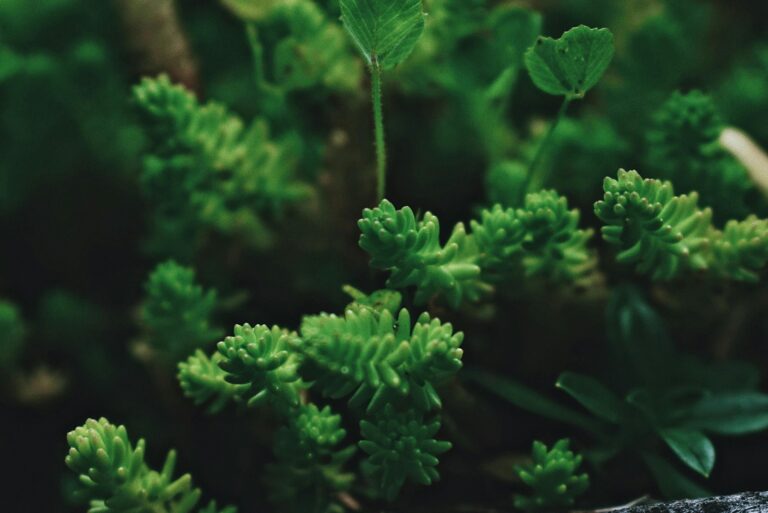
For more insight into nurturing these compelling plants, take a peek at this comprehensive sedum planting guide. It’s laden with tips that ensure your sedum doesn’t just survive but truly thrives. Meanwhile, if you’re looking to cultivate your own succulent sanctuary, discover the essential care practices that will help your sedums reach their full splendor.
Dive into the enchanting world of sedum and witness how these versatile succulents embellish any garden with their exquisite, resilient nature. From the rocky outcrops to a sunny corner of your backyard, sedum stands as a testament to the beauty and diversity of the plant kingdom.
Understanding Sedum’s Natural Habitat
Welcome to the rugged world of sedum, the hardy succulent that’s as versatile as it is vigorous. Imagine a plant so resilient that it thrives in the nooks of jagged cliffs and the crags of rocky landscapes. That’s the sedum for you—a true embodiment of botanical tenacity. These little warriors of the plant kingdom have their origins steeped in the most challenging environments imaginable, from the stone-strewn terrain of mountain ranges to the sun-baked earth of arid zones.

Time for a little storytelling: Picture the vast, sprawling mountains that slice through the skyline like nature’s skyscrapers. Now zoom in, and there—clinging to the edges, basking in the alpine sun—is the sedum, as comfortable on a sheer drop as a goat is to a hillside. It’s as if they were born from stone itself, each species adapting uniquely to their environment. In the wild, sedums carpet rocky ground where few other plants dare to set root. They’re the master adapters, making a home where the air is thin, and moisture is but a fleeting visitor.
Their adaptation to the lack of water is nothing short of miraculous. Storing moisture in their plump leaves, sedums can sustain themselves in environments that would leave other plants wilting. This incredible feature also makes them a superb candidate for garden cultivation, especially for those who might not possess the greenest of thumbs. The sedum’s durability and low maintenance needs have made them a favorite among gardeners and a perfect addition to rock gardens, green roofs, and dry soil beds.
If you’re looking to get a jumpstart on succulent care, we’ve got a treasury of tips that’ll help your sedums flourish. These rugged beauties ask for so little yet give back a bounty of lush foliage and vibrant blooms. Whether nestled in crannies, sprawling over a rockery, or standing sentinel in a desert garden, sedum plants demonstrate that with the right adaptations, life can not only persist but triumph in the most extreme of locales.
Adaptations to Dry and Stony Habitats
In a seamless blend of beauty and resilience, sedums have developed an array of features to conquer their unforgiving habitats. Their thick, waxy leaves are their lifeline, crafted by evolution to store precious water for the drought days. Sedums are the camels of the plant world, hoarding resources to see them through the tough times. It’s a survival strategy that’s nothing short of evolutionary genius.
And the colors! From green to red to purple, sedums don an array of hues that aren’t just for show—they serve a purpose, too. These colors can reflect sunlight and protect their tissues from getting scorched, like a built-in sunblock for plants. So the next time you marvel at their colorful display, know that there’s more than meets the eye; it’s nature’s palette at work, ensuring these succulents stay cool under the blazing sun.
Ideal Soil Conditions for Prosperous Sedum Growth
If you’re dreaming of a garden where the earthy textures of sedum playfully mingle with the vibrant tapestries of your other plantings, you’ll need to start with the foundation—literally. Sedums are like the bohemians of the plant world; they thrive where many other plants might raise their leafy eyebrows in distaste. But what’s their secret? It’s all about the soil. So let’s dig right into the gritty details that make for the ideal sedum paradise.
First and foremost, when we talk about the perfect soil for sedum, we’re getting into the realm of pH balance, where neutrality reigns supreme. These succulent beauties adore a well-balanced pH land, typically ranging between 6.0 and 7.5. This is a soil stage where sedum can perform their nutrient-absorption act with ease. Don’t have a pH-balanced stage for them? Not to worry, a simple soil test and some amendments can get you there in no time, ensuring that your sedum won’t just grow—they’ll put on a show.
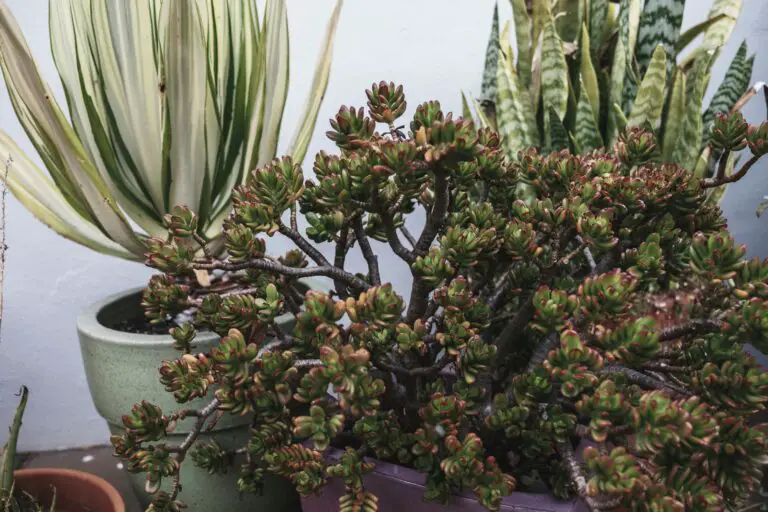
Now, let’s talk about drainage—the soil’s ability to let excess water slip away without creating soggy feet for our plant performers. Sedums have a no-fuss policy when it comes to their roots; they despise waterlogged conditions. A quick-draining soil akin to a rocky concert is what they adore. Coarse sand, volcanic rock, or perlite? That’s the VIP backstage pass for a rock star sedum. Imagine them nestled atop a gentle mound, the excess water like eager fans slipping away after the encore, leaving the roots perfectly content and camera-ready.
Of course, these conditions don’t always come naturally. If your garden’s soil is more fanclub-crowded than concert-hall spacious, don’t throw away your gardening gloves just yet. There’s a knack to tweaking that troublesome soil. Discovering the ways to condition your clay or bolstering a too sandy soil is a bit like being a stage manager; with the right amendments, you can adjust the set to suit the act, ensuring that sedum will not just grow, but they will flourish with an encore of blooms and foliage that steals the garden spotlight.
Indeed, mastering the art of soil conditioning doesn’t just benefit sedum—it’s a skill that translates across your entire botanical repertoire. But remember, when the curtain call comes around, and your garden is bathed in applause, it’ll be that perfectly prepped soil stage that made it all possible. So there you have it, garden maestros, with the right balance, drainage, and a pinch of amendment magic, your sedum is sure to be the standing ovation of your green space landscape.
The Perfect Amount of Sunlight for Sedums
Like sunbathers lounging at the beach to catch some rays, sedum plants also crave their spot under the sun. But it’s not just about basking aimlessly; it’s about finding that sweet spot where sunlight and shade intersect, offering just the right light cocktail. Picture a day at the park, with kids playing under a mix of sun-drenched spots and tree-dappled shade – that’s the playground sedums thrive in!
Sedums, or stonecrop, as they’re affectionately known due to their tough-as-nails personality, are an intriguing bunch. They aren’t one-size-fits-all when it comes to their solar needs. Yet, for most, a full-on sunny location is akin to their personal nirvana. In fact, if sedums could talk, they’d likely shout, “More sun, please!” allowing them to flaunt a full spectrum of vibrant colors and healthy, robust growth.
Still, our sun-loving sedums understand life’s complexities, and they’re quite forgiving if they don’t get to sunbathe from dawn till dusk. There are species within this diverse group that will graciously nod and say, “Partial shade will do just fine, thank you.” These varieties can tolerate a little less of the limelight, thriving even when the sun plays a game of hide and seek behind cloud cover or tree canopies.
Let’s consider the hardy Sedum telephium, commonly found bedecking rock gardens or gracing borders. Give it a place in full sun, and it will reward you with a stand-out performance of autumnal blooms. Then there’s the charming Sedum spurium, adaptable and perfectly content with a few hours less of sunshine, making itself at home in those semi-shaded nooks of your garden.
However, it’s essential to not overcoddle these resilient charmers. Overindulge them with shade, and you might find them stretching out, seeking the sun’s kiss, much like a cat reaching for a warm window ledge. The result? Leggy plants, reaching for a dream, instead of standing stout and sturdy.
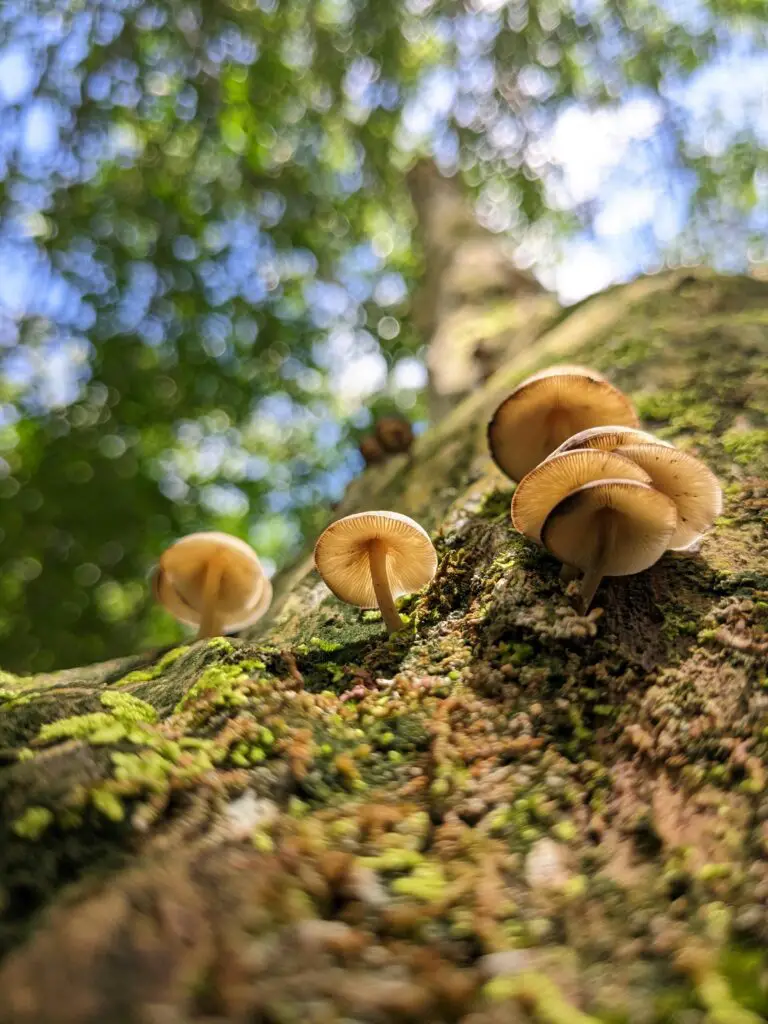
In practical terms, think about the typical day of a sedum in your garden. If it’s bathed in sunlight for a substantial part of the day, akin to that afternoon hike where the open trail offers no respite from the gleaming sun, then you’re golden. However, if your garden mimics the dappled light of a wooded pathway, worry not; your sedum companions can still prosper, their leaves glistening with vitality amidst the play of light and shadow.
Real-life examples are all around us when understanding sedum’s sunlight preferences. Visiting a nursery and observing the difference in sedum’s color and stature in various light conditions can be quite enlightening. Or perhaps you’ve noticed how those planted near the pavement, which reflects additional light, tend to be more intense in hue and form compared to their counterparts nestled near the cool, earthy tones of garden stones.
Understanding and respecting these preferences is paramount for gardeners aspiring to create that picture-perfect sedum scape. Offer them the light they love, and they’ll settle in, striking roots that anchor firm and foliage that reaches confidently for the sky. It’s all about balance and reading nature’s cues – something sedums are rather philosophically candid about.
Water Requirements: Keeping Sedum Hydrated but not Overwatered
Imagine if Goldilocks were a gardener, the sedum might just be her favorite plant. Too much water? No, thank you. Too little? Not quite right. The art of watering sedum is a delicate balance, one that requires a bit of knowledge and a little attention to detail to get it just right.
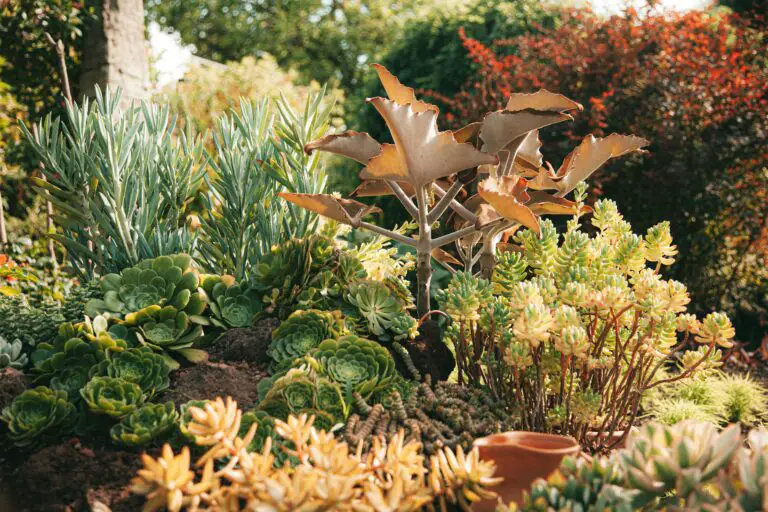
Let’s dive into the watering needs of sedum. This robust, yet low-maintenance succulent has a preference for the ‘less is more’ approach when it comes to hydration. Unlike thirstier plants that may demand daily sips from the watering can, sedum plants thrive with a drink only when the soil has completely dried out. Overzealous watering can lead to a host of issues, including root rot and fungal diseases – real party poopers in the plant world.
How do you know when it’s time to water? Pay attention to the cues your sedum offers. If you notice the leaves looking shriveled or if the plant appears a bit deflated, it’s gently signaling for a bit of moisture. On the flip side, leaves that are discolored or feel mushy are waving red flags at you, indicating excess water. Properly hydrated sedum plants sport plump, firm leaves – a sign they’re content with their watering regimen.
Don’t forget about the role of good drainage. Just like a well-designed road system lets traffic flow smoothly, an effective drainage setup is pivotal for sedum wellness. Ensure your sedums are potted in a soil mix that promotes quick water run-off, and if they’re calling your garden home, plant them in a spot where water doesn’t linger. Raised beds or slopes can be the perfect stage for these water-wise performers.
Gaining wisdom on the water needs of sedum doesn’t require a horticulture degree – just a bit of observation and response to the plant’s needs. With your nurturing, sedums will flourish, displaying their succulent beauty without the worry of being drowned in love.
Temperature and Climate: Finding the Best Spots for Sedum
Picture this: a lush tapestry of sedum, each chubby leaf bursting with life, thriving in the sweet spot where temperature and climate converge into perfection. Sedums, with their plump foliage and star-shaped blooms, aren’t just pretty faces; they’re resilient survivors, but even these hardy plants have their preferences when it comes to their growing conditions.
So where do sedum like to grow? Let’s dive into the world of sedum and unearth the secrets to their success. Generally, sedum, or stonecrop, is quite the versatile performer, adapting to a broad spectrum of climates, often found dotting rocky hillsides or basking in the dappled sunlight of a garden. They particularly favor spots that mimic their native haunts: think poor, well-drained soil with a good amount of sunlight.
But let’s get specific about temperature. Sedum plants can flourish in temperatures ranging from a light frost to scorching summer days. They dance through most USDA hardiness zones, swinging wide from 3 to 9. This means whether you’re enjoying the cool, crisp autumns of New England or the sizzling summers of the Southwest, you can find a sedum variety that’s ready to call your garden home.
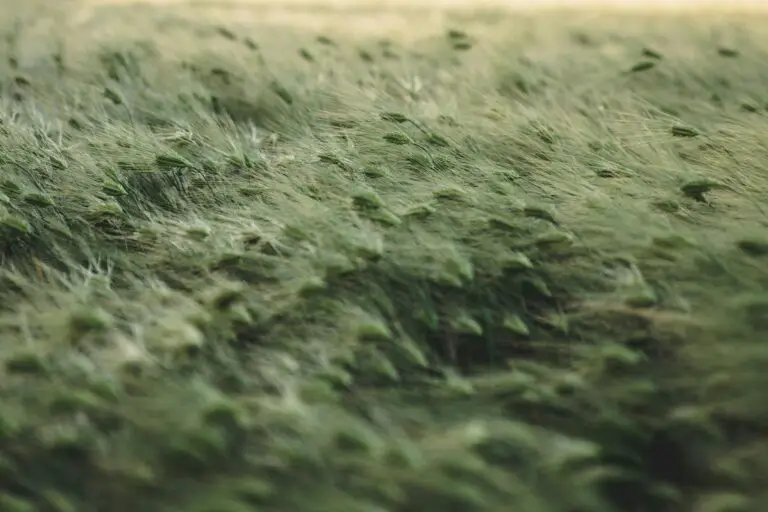
Think about sedum as the sunbathers of the plant world; they soak up the rays, with most varieties preferring at least six hours of sunshine a day. More sun often encourages stronger stems and more vibrant blooms. However, they are not just sun worshippers – there are varieties that can handle a little shade, yet they still lean towards light like sunflowers following the day’s arc. Placing your sedum in a south-facing garden will ensure they get the light feast they crave.
When it comes to climate, sedum are as cool as a cucumber. They shrug off dry, arid conditions with the nonchalance of a desert cactus. In such environments, you might find them in sandy soil, gracing the landscape much like a natural quilt, keeping the ground cool with their ground-covering habit. Rainy regions are not off-limits, but good drainage is a must. Soggy soil can lead to root rot, which is the kryptonite to our sedum superheroes.
Analyzing their climate and temperature needs, it’s clear that sedums are not just survivors; they’re passionate performers in the right conditions. Think Mediterranean landscapes, rock gardens, or alpine scenarios. Even urban spaces with their limited soil depth—provided they offer good drainage—make excellent stages for these robust beauties to showcase their resilience.
Remember, positioning sedums in your garden for optimal growth isn’t a Herculean task. It’s about understanding and mimicking the conditions where they naturally excel. So, whether you’re crafting a green roof or tucking them into a stone wall, sedums will reward you with their undemanding nature, captivating textures, and a year-round display of charm and toughness.
Selecting Your Sedum: Popular Varieties for Different Gardens
When it comes to choosing sedum for your garden, variety truly is the spice of life. These hardy succulents offer a palette of colors, shapes, and sizes that can make a gardener’s heart skip a beat. But it’s not just about good looks—finding the right sedum means understanding the unique preferences of each species. Let’s dive into some crowd-pleasers and how they can turn your garden into a vibrant tapestry of low-maintenance beauty.
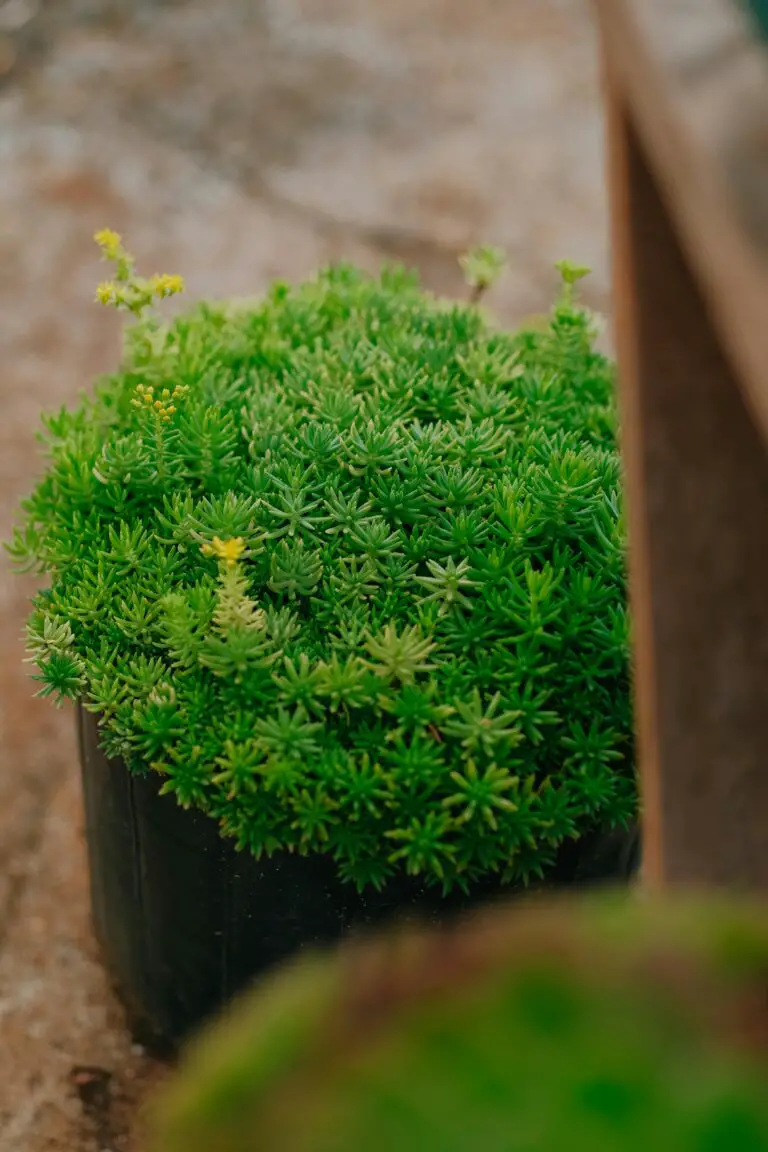
Sedum “Autumn Joy”, or shall we say, the ‘joy’ of every autumn garden, reigns supreme for its robust constitution and its effortless transition from deep green to rich autumnal hues. This perennial favorite craves full sun but will tolerate a bit of shade. It struts its stuff best in well-drained soil, making it a prime candidate for rock gardens or those gritty soil areas where other plants may struggle.
Moving on to the ever-charming Dragon’s Blood Sedum. Captivating with its mythical name, this groundcover sedum carpets the earth with a dense mat of burgundy leaves that intensify as the mercury drops. It’s sunlight-hungry, so positioning it in a sunny spot will bring out the full fire and intensity in its foliage. Have a sloped terrain or a spot plagued by erosion? This dragon will firmly anchor its territory with fierce determination.
Consider the visually-stunning Blue Spruce Sedum, with its distinctive blue-green needle-like leaves. The resemblance to a miniaturized spruce is uncanny, and it brings a touch of whimsy to any garden setting. True to its namesake, it shines in conditions that mimic a high-altitude habitat—think cool, not too wet, and bathed in abundant light. It’s a conifer in succulent clothing, perfect for adding a burst of year-round color.
For those with dappled shade areas, lighten up the landscape with Sedum sieboldii. This variety presents a delicate dance of round, flat leaves edged in a soft pink that blooms into a festival of magenta flowers come fall. It asks for well-drained soil and can gracefully handle a partially shaded spot, adding a serene elegance to your quieter garden nooks.
Lastly, let’s not overlook Sedum acre, the vibrant ‘Goldmoss’. Its bright yellow flowers are like sparkling jewels tucked among the fleshy green leaves. Adaptable and fiercely drought-resistant, it asks for little but offers much. Sedum acre thrives in the not-so-fertile soils and relishes spots where the sun beats down with intensity. A true survivalist, it serves as a testament to the resilience and diversity of the sedum family.
Eager to find your garden’s sedum soulmate? Whether you envision a drought-tolerant roof garden or a plush perennial border, these sedum varieties are just the beginning of your journey into a world where hardiness meets sublime beauty. Just remember, when picking your plant partner, consider their needs, and they’ll reward you with a performance that’ll leave visitors green with envy!
Maintenance and Upkeep: Prolonging the Beauty of Your Sedum
Picture this: a resilient, low maintenance sedum, basking in the sun, vibrant and full of life. It’s a perfect addition to any garden, with its forgiving nature and year-round beauty. But even the hardiest plants need some TLC to show off their best selves. Let’s dive into the world of sedum upkeep and uncover the simple and fun practices that will keep your sedums as the focal point of envy in your neighborhood!
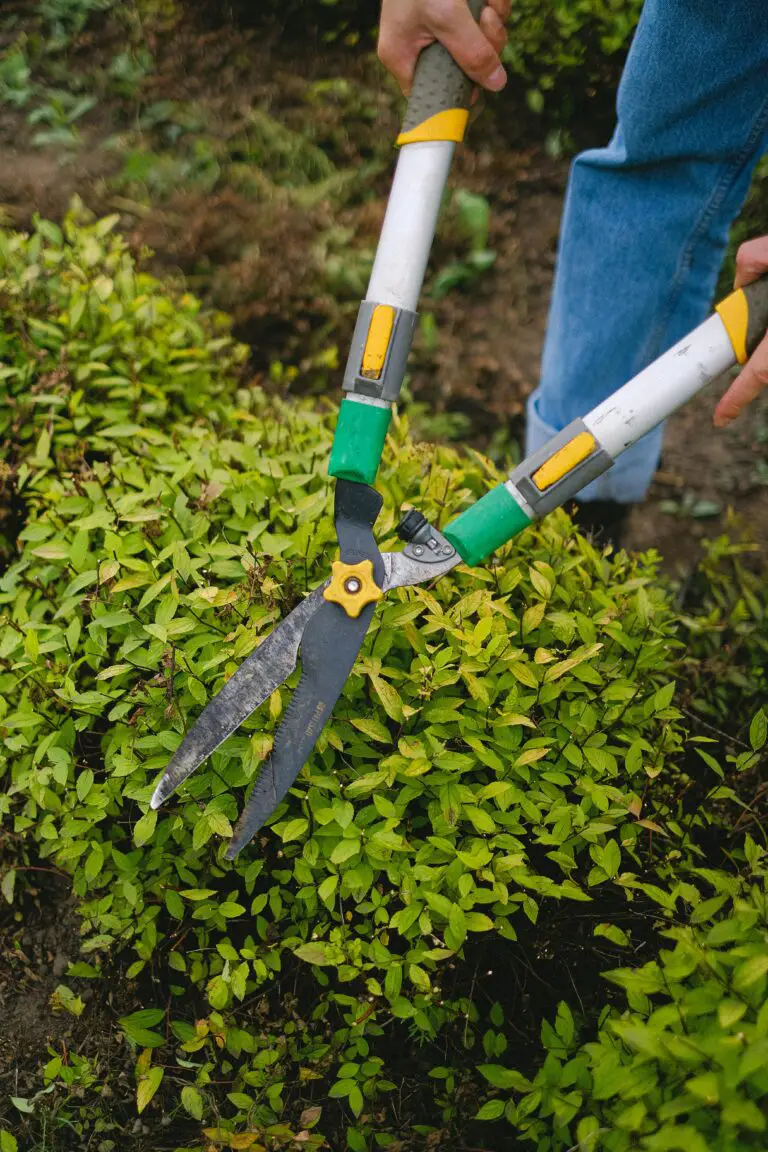
Pruning with Purpose: Have you ever seen a sedum that’s grown so happily that it flops open like a book full of secrets? That’s when your secateurs come into play. Prune in early spring to encourage denser growth or after blooming, if you’re after neatness. But that’s not all – pruning is as much an art as it is a chore. It’s your chance to shape your sedum into a visual masterpiece!
Fertilizing the Sedum Way: Sedums aren’t fussy eaters. In fact, too much fertilizer can do more harm than good, leading to leggy plants or fewer blooms. Imagine feeding your plants just enough for them to flourish without getting out of hand. A gentle feed in the spring with a balanced, slow-release fertilizer will make all the difference, giving them enough oomph to grow without going overboard.
The Seasonal Shuffle: Sedums are pretty comfortable where they are, but sometimes they need a change of scenery or company. Dividing sedums every few years prevents overcrowding and revitalizes their spirit. It’s like they get a second wind, reinvigorated to take on the world, or at least the garden, with renewed vigor. Plus, you get more plants to spread around or share with friends!
Navigating Nature’s Challenges: Even the stalwart sedum has its nemeses – overwatering, poor drainage, and pests, to name a few. By being proactive and responsive, you can steer clear of these hurdles. Ensure good drainage, be conservative with the watering can, and keep an eye out for uninvited critters. It’s like playing detective in your own garden – exciting and preventive!
Remember, maintenance is all about balance and timing. Just a bit of attention and you’ll have sedums that not only survive but thrive, adding structure, color, and life to your garden all year round. So don your gardening gloves, fetch your tools, and let’s keep your sedums looking picture-perfect!
Multiplying Your Garden’s Joy: Sedum Propagation Explained
It’s no secret that sedum, with its lush colors and hardy demeanor, have won the hearts of gardeners everywhere. Imagine, with a few simple steps, you could create a sprawl of these succulent beauties throughout your garden patch. Let’s delve into the exciting world of sedum propagation, an adventure that promises to enhance your green space manifold!
First off, we’re talking about cuttings—a gardening classic. Picture this: you’re strolling through your garden, and you spot a perfect sedum plant. Its leaves are plump with life, just begging to be perpetuated. Snip off a healthy stem, allow it to callous for a day or two, and then gently nestle it into a well-draining soil mix. With warmth, a touch of moisture, and some patience, roots will eagerly spring forth, seeking their place in the world.
But it doesn’t end there! Division is another path to a bounty of sedum. This technique is ideal when your sedum clump has grown so vivacious that it practically begs for more space. In the cool reprieve of spring or fall, lift the clump, gently tease apart the rootball into segments, and replant. And there you have it—more sedum, each a mirror of the plant’s vibrant tenacity.
Wondering if these methods are effective? Let me weave you a tale of a certain green thumb who transformed a single sedum plant into an impressive sweep along a sunny slope, creating a tapestry of texture and color that was the envy of every plant enthusiast far and wide. Next could be you, turning your garden into a sedum sanctuary and witnessing the thrill of growth firsthand.
For the hands-on learners, precise instructions are key for a no-fuss, surefire propagation. Fear not, for the wisdom of countless gardeners will be distilled into an easy-to-follow guide—stay tuned, and you’ll be equipped to set forth on your propagation journey.
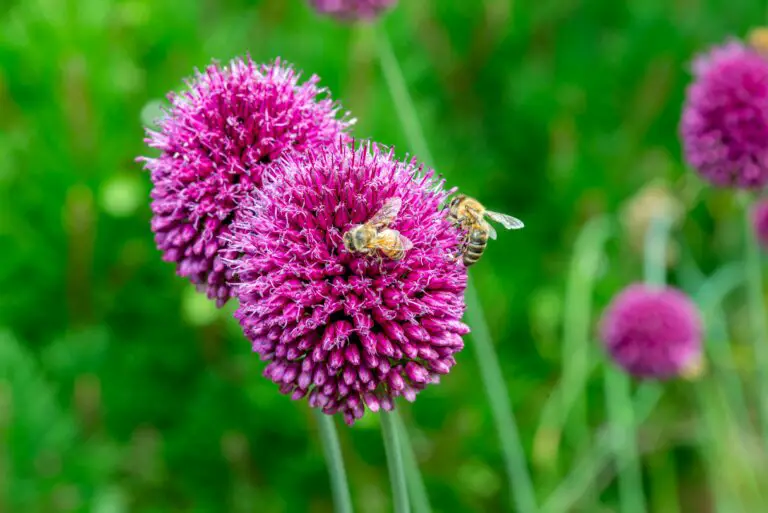
Now, imagine the lush spread of sedum, a testament to its love for sunny spots with excellent drainage. You’ve seen how these jewel-toned succulents can turn a drab corner into a vibrant focal point, reflecting their adaptable yet specific growing cravings. Get your garden gloves ready—it’s time to multiply the joy with sedum!
Designing with Sedum: Landscape and Container Ideas
If you’re seeking to infuse your garden with texture and year-round interest, look no further than the versatile sedum. A real charmer in the plant world, sedums are as tough as they are beautiful. When envisioning garden designs with sedums, consider their love for well-draining soils and places where the sun lovingly kisses the earth—this is where they truly want to grow. But don’t feel pigeonholed; sedums are flexible enough to suit various garden styles and scenarios.
Imagine a rock garden weaving through your backyard, with sedums peeking out from nooks and crannies, their succulent leaves adding a pop of color among the stones. These plucky plants thrive in the sharp drainage conditions of a rockery, mirroring their native rugged habitats. Their drought-tolerant nature means they can outlast many-a-dry summer, demanding very little but giving a lot in return.
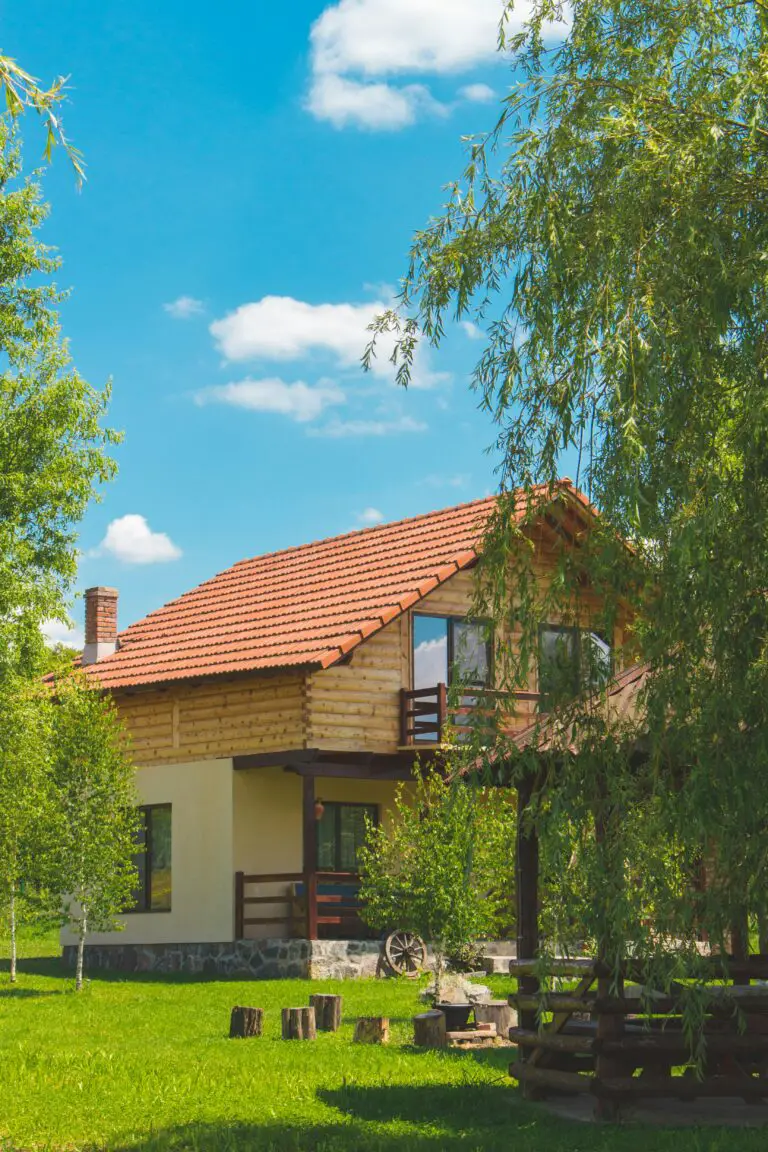
Border designs also benefit from the inclusion of sedums. Intersperse them among lavender or catmint for a tapestry effect in full sun borders. As seasons change, sedums stand tall and unflinching, offering a dynamic contrast to the softer forms of perennial neighbors. The visual impact is undeniable; from the lush green rosettes in spring to the rich autumnal hues as the cooler months roll in.
Don’t have a lot of space? No worries! Containers are a godsend for sedum enthusiasts with limited gardening real estate. From the balcony of a city dweller to the quaint patios of a countryside abode, sedums in containers can bring life and style to constricted areas. Even better, they are low-maintenance companions—a perfect match for the busy bee who desires a bit of nature’s touch here and there.
Beyond their hardy nature, sedums offer aesthetic benefits to any garden. They’re like nature’s living sculptures, adding form and structure that lasts. Let the sedum be your canvas for green roofing projects or as living decor on walls. Nature’s own masterpiece, they create an engaging environment that resonates with beauty and resilience—just let your imagination take root and watch as sedums transform your green space into a horticultural haven.
Aesthetic Benefits of Sedums in Gardens
The aesthetic appeal of sedums can hardly be overstated. From the moment they begin to peek above the soil in spring, their diversity of foliage color—from bright greens to deep purples—begins to sketch the garden’s mood. Come summer, they burst into a spectrum of flower clusters that bees buzz happily around. As the air cools, sedum leaves take on a flush of autumnal shades, echoing the fall fireworks of deciduous trees. These visual symphonies not only grace gardens with unmatched visual interest year-round but also become sanctuaries for wildlife, enhancing biodiversity in urban and rural landscapes alike.
Incorporating sedum into your garden isn’t just about embracing a plant; it’s about designing an experience, a visual journey through the seasons. So sprinkle a little sedum magic around, and watch your garden come alive with color, texture, and life. It’s not just where sedum like to grow—it’s where they help your garden thrive.
Addressing Common Challenges in Growing Sedum
Let’s talk green thumb woes with a tough-as-nails plant: sedum. Beloved for their hardy nature and vibrant colors, sedum plants can still leave their admirers scratching their heads over sudden issues that may arise.
First off, when these stoic succulents face off with pests like aphids and mealybugs, it’s not always a pretty sight. These uninvited guests can be spotted hustling along your sedum’s foliage, seeking out the yummiest sap-filled leaves. The key? Vigilance and quick action—nipping the problem in the bud with insecticidal soap or neem oil before the critters set up camp.
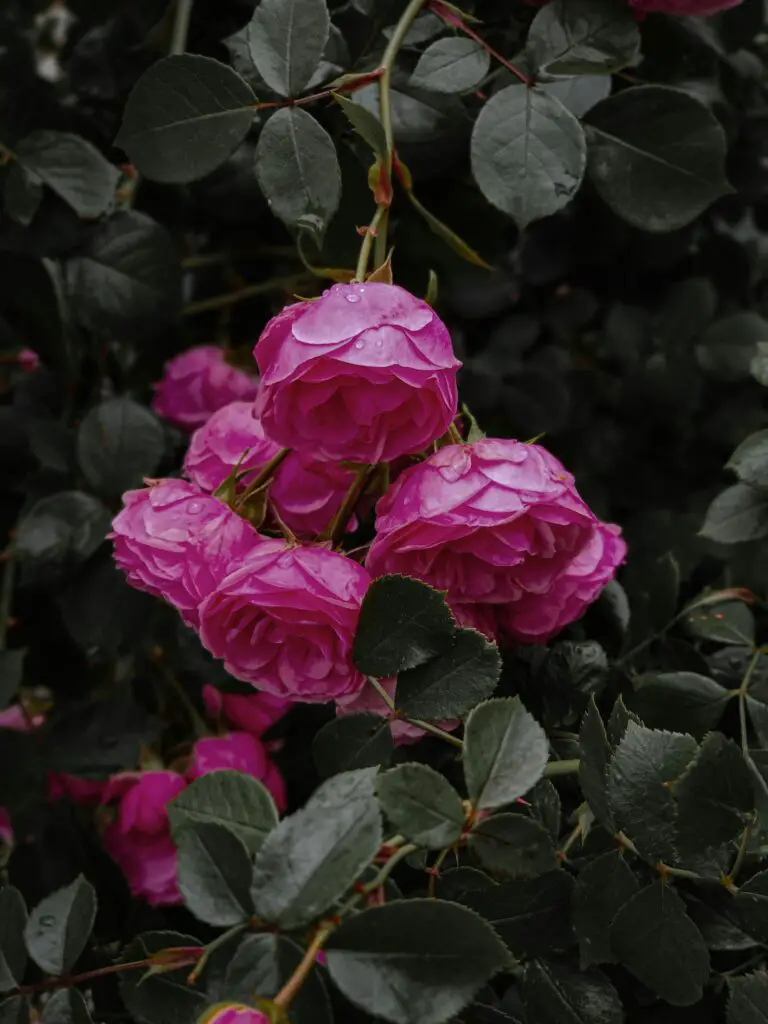
Now, let’s chat diseases. You might have noticed your sedum throwing a fit with signs of rot or powdery mildew. This is sedum’s way of crying out for help with its soil situation or a plea for better air circulation. What’s the fix? Making sure your sedums are planted in well-draining soil, and there’s enough space between them for air to do its thing.
If you’ve ever faced the dreaded battle with slugs, you know it’s a slimy affair that can leave your sedum looking like an all-you-can-eat buffet. Real talk: those mollusks have quite the appetite for tender sedum shoots. Sprinkling some diatomaceous earth around your plants or setting up a slug trap helps ensure these sneaky gastropods dine elsewhere.
Remember, gardener, it’s not about having a perfect track record but learning the ropes of handling these issues like a pro. When you spot a problem, channel your inner garden detective, investigate, and apply the right counter-tactic. Before you know it, you’ll be the neighborhood’s go-to sedum sage!
Frequently Asked Questions
Have you ever wondered where the robust and radiant sedum plants love to set their roots? Well, we’ve got the scoop for you! Imagine spotting these succulent beauties nestled in a rocky crevice or sprawled across a green roof – that’s sedum in its element. These plants are not just survivors; they are born conquerors of tough living conditions. Let’s dive into some of the most burning questions about where sedum plants thrive best!
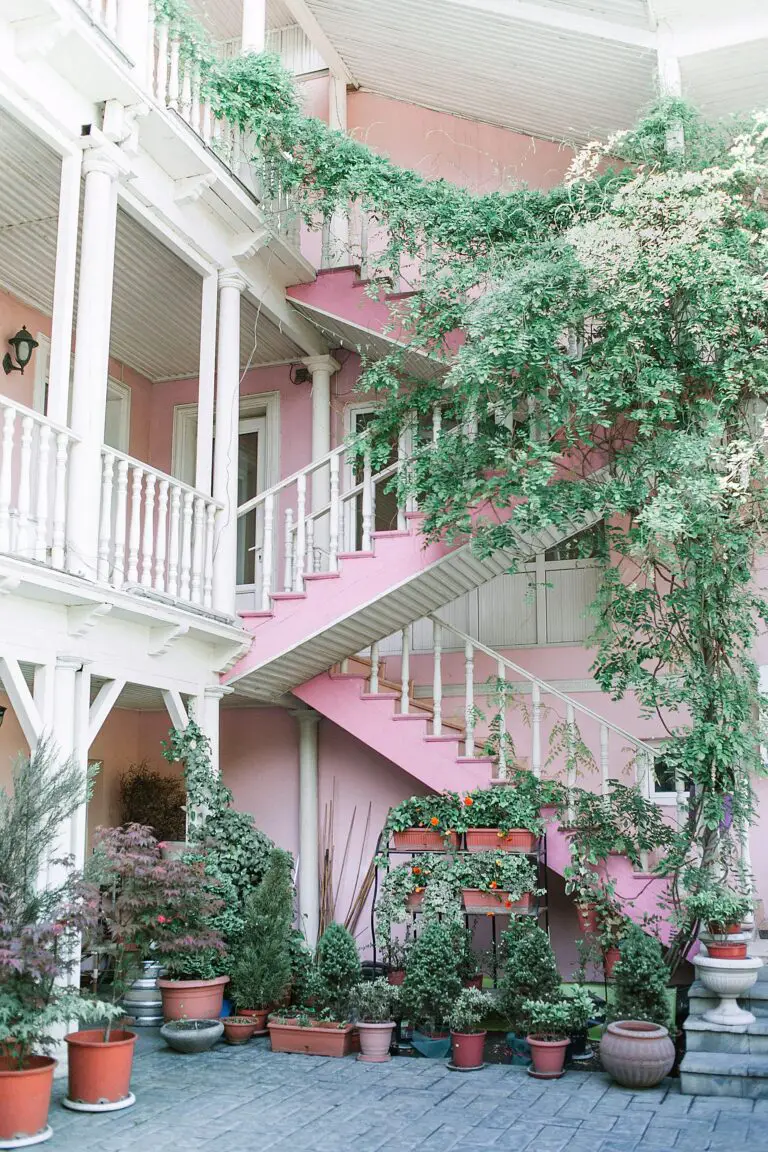
Can Sedum Grow in Pots?
Definitely! Picturing a quaint patio lined with potted sedum? It’s a reality for many plant lovers. These succulents are like the flexible yogis of the plant world, able to adapt to container life with ease. You’ll find them soaking up the sun on high-rise balconies or making a statement on minimalist desk setups. Just ensure they have well-draining soil and watch these hardy wonders flourish.
Is Full Sun a Friend or Foe to Sedum?
A friend, through and through! Sedum plants relish basking in the golden rays like sunbathers on a beach. They thrive when drenched in sunlight, which boosts their inherent vibrant colors and encourages hearty growth. Keep in mind, though, even sun-lovers need some respite on scorching summer days. Strike a balance, and you’ll have a patch of paradise that beams with life.
Are Sedum Suitable for Rock Gardens?
Absolutely! If there’s a place that sedum will call home, it’s the rock garden. Picture a serene Japanese Zen garden or a rugged Alpine hillside; that’s the aesthetic these succulents aspire for. They slot perfectly into nooks and crannies of stone configurations, lending a touch of wild nature to sculpted landscapes. Their tenacity for thriving among rocks comes from their exceptional drought tolerance and love for sharp drainage.
How Do Sedum Plants Fare in Cold Climates?
One might think delicate plants and biting cold don’t mix, but sedum plants defy this notion with gusto! Their hardiness makes them a match for cold climates where lesser plants might surrender. While they embrace winter’s chill, remember to provide a well-drained spot to avoid soggy soil, which is more chilling to sedum than the cold air itself.
What About Sedum and Urban Gardens?
Urban gardens and sedum are a match worthy of a rom-com. With the rise of green roofs and vertical gardens, sedums are slipping into the limelight. They paint a swath of green amidst the concrete and steel, reminding us of nature’s tenacity. These plants don’t fuss over air pollution or the urban heat island effect; they simply grow, adding lush touches to our metropolitan canvases.
Now that you’ve had a glimpse into the world of sedum and where they thrive, you might be inspired to create a cozy corner for these resilient plants in your own space. Whether it’s a high-rise patio or a whimsical rock garden, sedum is ready to enchant. So, go ahead, invite these versatile beauties into your life and watch your garden, and spirits, lift.


